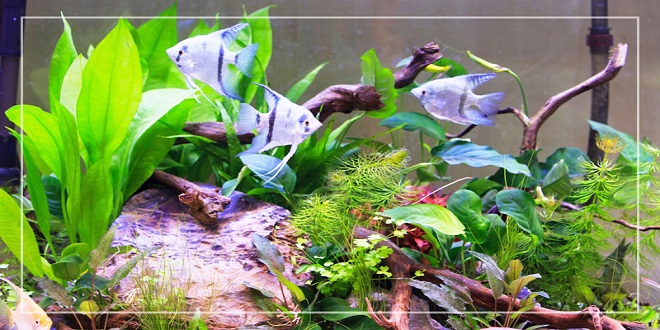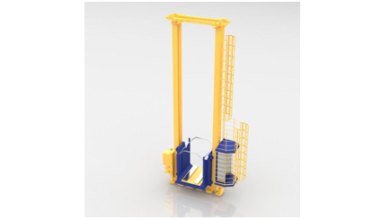How to Start a Planted Aquarium – A Beginner’s Guide to Setting Up

For anyone who is looking to decorate their home with a spiritual aesthetic, aquariums are a great choice. With all the colorful creatures that live in it, an aquarium gives a space a natural appearance. It is a living organism that generates energy and holds life. Freshwater aquariums are beautiful and help us create an ecosystem in our homes.
Aquariums that contain live plants are more conducive to fish comfort. The presence of live plants can generate oxygen and absorb CO2. This is extremely beneficial for all freshwater fish. Because the plants are living, there is no risk of them releasing artificial colour. Your freshwater aquarium will look stunning and interesting with vibrant fishes and beautiful lights.
It is likely that you are wondering how to set-up a freshwater aquarium with live plants. We are here to assist you in setting up a plant aquarium.
Equipment for setting up an aquarium
To assemble your planted tank, you will need to have a few things. Here’s a list of things you will need to assemble your planted tank.
Different Plants: Anubias Nana and Micro Sword, Java Ferns, Java Mosss, Wisterias, Moneyworts, Indian Waterweeds, Pygmy Chain Swords and Java Ferns.
A glass aquarium
Substrate for planted tanks
Freshwater lights (LED strips)
Driftwood
Structure of rocks and crevices
Power filter
Heater
A test kit
Do not forget to include the little creatures for whom the tank is being designed. There are many options: you can add beautiful Gouramis, Tetras, Fancy Goldfishes, and gorgeous Bettas.
Learn the Process
Selecting the right location
A planted aquarium requires enough lighting to show off the beauty of the plants. You will need to place the tank in a location that is near an electric plug outlet, and one that receives enough shade and is less damp. To encourage rapid growth, you should not place the tank in direct sunlight. This will cause the tank to become brittle and will result in constant temperature swings based on changes in day and night temperatures.
To grow plants, they need a specific wavelength of light. If you think that heavy lighting will make them more productive, we say no. To make your greenery look lush, keep a certain range for large tanks.
25 Watts/litre (low light)
50 Watts/litre for medium lighting
For high lighting, 0 Watts/litre
Avoid keeping a planted aquarium in crowded rooms. This will allow it to display its beauty. You might endanger it by causing them to collide with other pets or children. It is better to keep it in a low-traffic area with easy access to water.
Proper cleaning of accessories
Minor dirt can cause problems for the aquarium’s life. To reduce cloudiness in the tank, clean all substrates and the entire tank. You can quarantine your plants to get rid of any pest snails or duckweed to ensure that they are safe for fishes. After you have made sure that these harmful substances are gone, place the plants in the tank.
Install the substrates in the tank
Substrates are very important for a planted aquarium because you can use any type of gravel or sand. Then you can proceed. You must also provide nutrients for the plant. To allow organic material to collect within the substrate, you can add different sized pebbles or grains. The roots will be held in place by the different sands and rocks as well as gravel. The substrate should be kept at least 2 to 3 inches in length, with a size range of 2 to 5 mm. Root fertilizers are suitable for Sword plants and other plants that rely on root nutrition.
Root Fertilizers in tablet form are high in nutrients such as magnesium, zinc, iron, and potassium.
After the substrate has been completed, place the tank on a suitable tank stand.
Hardscaping and filling dechlorinated water
After the substrate has been added, you will need to place the heater and filter, which will adjust the temperature and flow of the water. During this stage, don’t turn the heater or filter on. You can arrange the rocks, driftwood, and bogwood to create a unique aquarium that is healthy.
After you have completed hardscaping, dechlorinated water can be placed partially inside the tank. Fill the tank with 6 inches of water if it is a 20-gallon one. This water will keep the plants in place. However, it is important to pour slowly and use a bowl to prevent destroying pre-arrangement hardscaping. To help your plants grow, it is important to keep the pH level at 6.8-7.8. Reverse osmosis can be used if the pH test results are not as expected.
Putting plants
Placing the plants is the most important and final, but not least, task. Place the plants on the substrate slowly and allow them to settle into the sand. Cover the holes with roots and cover it with gravel and sand. Both the roots and stems will eventually become stable.
You can also put floating plants, but don’t keep them. After you have completed the setup and filled the water tank, place the plants on the water level.
The Final Touch
Start the tank to cycle. Add ammonia to the tank at first. Gradually increase this amount by 1-2 ppm each day. This will encourage the growth of beneficial bacteria. This is the final step, where you can add exotic creatures to your aquarium.
A little Note
Freshwater-planted aquariums are a great way to create natural beauty in your home. To sum it all, it is crucial to research any fish or plant before you purchase. Each living thing, whether it is a fish or a plant, needs different conditions in order to thrive. You must ensure that your home is healthy and not stressful for your children.





